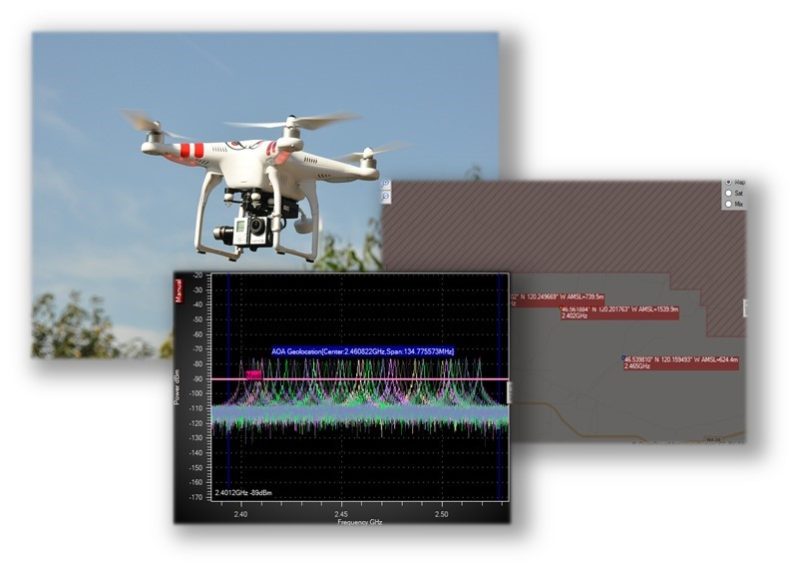
The growing threat from commercial drones has generated a wave of activity from vendors claiming that RF detection and geolocation offer a complete solution.
In this article, we will explore whether RF is really the whole answer.
The Problem
Drone-related incidents in recent years include near misses with passenger aircraft, smuggling contraband goods into prisons the discovery of a drone containing radioactive caesium on the roof of Japanese Prime Minister Shinzo Abe’s office. A wide range of counter-drone solutions have been proposed, from conventional radar to using trained eagles to attack the aircraft. Spectrum monitoring to detect and geolocate drone control signals is one solution which has become popular in recent years. While CRFS strongly advocates spectrum monitoring as an important element in a comprehensive counter-drone system, we are concerned by attempts to present RF detection as a complete solution – especially given the potentially fatal consequences of failed drone detection.

Why RF Is Important
Commercial drones are usually operated via a radio control signal and often have on-board data link transmitters for real-time sensor download (typically in the 2.4 GHz ISM band). These can be detected and located with spectrum monitoring solutions well before the drone enters a protected area such as an airport, a prison or a government facility. While it is difficult to detect low-flying drones or distinguish drones from birds using conventional radar detection methods, this is much easier when using RF control signal detection. In addition, RF detection allows for location of not only the drone itself, but also of the source of the control signal – i.e. those responsible for any crime or nuisance behaviour. Countermeasures such as signal jamming or firing nets may then be used to neutralise the threat.
RF Limitations
Spectrum monitoring is a very robust solution – when RF signals are present. However, there are drones that can operate without any radio control signal. For example, terrorists and organised crime groups may choose to operate drones using a preprogrammed route rather than a live control signal, specifically to avoid detection. Although preprogrammed drones may send non-ISM signals such as periodic status updates or video feeds, some drone-specific RF detection systems are designed to detect control signals only and so cannot detect or locate these other signals. Tethered drones, which use a cable tether for power and control, are also appearing on the market. Spectrum monitoring solutions are not effective in these specific scenarios.
What Is the Answer Then?
CRFS recommends an integrated system combining the relative advantages of spectrum monitoring, radar, infra-red, acoustic detection and other methods. This need not mean relying on one method or another depending on the scenario, but means systems that can combine methods to maximise detection probability, minimise false alarms and optimise geolocation uncertainty. In summary, RF is the answer, but only part of it.
| Method | Benefits | Limitations |
|---|---|---|
| RF detection |
|
|
| Radar |
|
|
| Acoustic |
|
|
| Infra-red |
|
|
| Visual – human |
|
|
| Visual – automated |
|
|
CRFS offers a high-performance RF monitoring solution as part of a multi-sensor approach to counter-drone systems.
Contact CRFS for more details.

White paper
Making sense of radio frequency
RF matters because it is critical for today’s electronic devices – the foundation of our modern, wirelessly-connected lives.
